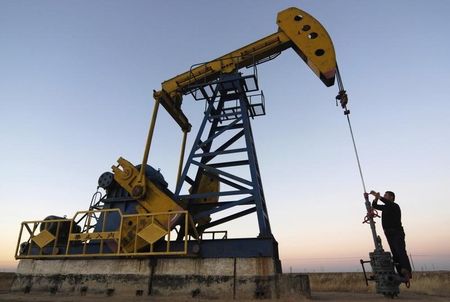Commodities
Crude oil rises on Middle East supply disruption concerns

Investing.com — Oil prices rose Thursday on concerns that the escalating Middle East conflict could disrupt crude flows from this key exporting region.
By 08:40 ET (12.40 GMT), the futures traded 2.2% higher at $71.61 a barrel and the contract climbed 1.9% to $75.33 a barrel.
Crude rises on Middle East tensions
The crude benchmarks continue to push higher as traders await Israel’s response to Iran firing more than 180 missiles into its territory, given the potential for any response to target Iranian oil infrastructure, hitting the supply of a senior OPEC member.
“There have been suggestions that Israel could target Iranian oil facilities, which would have the potential to push oil prices significantly higher depending on the scale of the attack,” said analysts at ING, in a note.
“Iran exports roughly 1.7m b/d of crude oil, so the potential impact is meaningful,” ING added. “However, an attack on oil facilities may upset the US, particularly as we move closer to elections. A more limited response would be hitting launch sites used for the recent missile attack, while a significant escalation would be if Israel decided to target Iranian nuclear facilities.”
OPEC+ keeps output unchanged
The members of the Organization of Petroleum Exporting Countries and allies, a group widely known as OPEC+, met on Wednesday, and recommended no change to its output policy.
The group is scheduled to raise output by 180,000 barrels per day each month, starting in December.
“The only thing mentioned about the geopolitical situation and the conflict was the hope for non-escalation,” said an OPEC+ source familiar with the discussions, according to Reuters.
While OPEC has enough spare capacity to compensate for the loss of Iranian supplies, much of that capacity is in the Middle East Gulf region and potentially vulnerable should the conflict escalate further, said Giovanni Staunovo, analyst at UBS.
US crude inventories rise – EIA
U.S. crude inventories rose by 3.9 million barrels to 417 million barrels in the week ended Sept. 27, the Energy Information Administration said on Wednesday, compared with expectations of a 1.3 million barrel decline.
Commodities
Oil prices rise; U.S. crude inventories plunge, Russia-Ukraine truce eyed
Commodities
India’s Reliance to stop buying Venezuelan oil over US tariffs, sources say
Commodities
Oil prices climb on Venezuela supply worries

 Forex3 years ago
Forex3 years agoForex Today: the dollar is gaining strength amid gloomy sentiment at the start of the Fed’s week

 Forex3 years ago
Forex3 years agoUnbiased review of Pocket Option broker

 Forex3 years ago
Forex3 years agoDollar to pound sterling exchange rate today: Pound plummeted to its lowest since 1985

 Forex3 years ago
Forex3 years agoHow is the Australian dollar doing today?

 Cryptocurrency3 years ago
Cryptocurrency3 years agoWhat happened in the crypto market – current events today

 World3 years ago
World3 years agoWhy are modern video games an art form?

 Commodities3 years ago
Commodities3 years agoCopper continues to fall in price on expectations of lower demand in China

 Economy3 years ago
Economy3 years agoCrude oil tankers double in price due to EU anti-Russian sanctions























